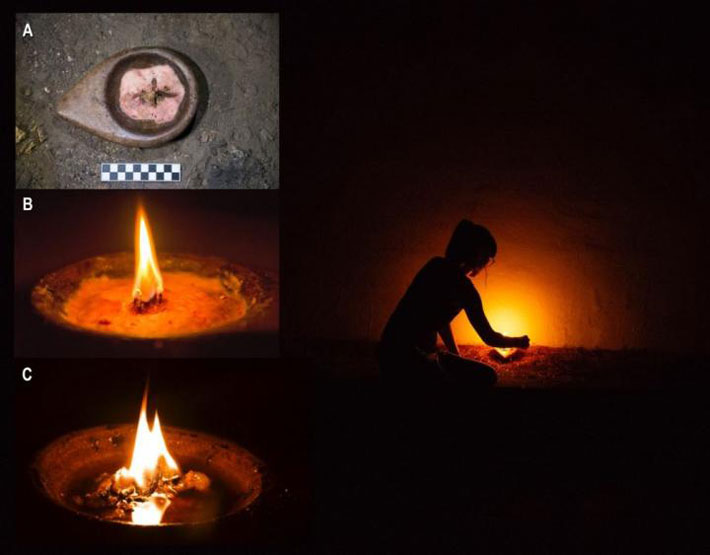How Did Paleolithic People Light Up Their Caves?
According to a Public Library of Science statement, a team of researchers led by Mª Ángeles Medina-Alcaide of the University of Cantabria tested possible sources of light employed by Paleolithic peoples to reach the deepest, darkest areas of caves.
Humans need light to access the deepest areas of caves–and these visits also depend on the type of light available, like light intensity and duration, area of illumination, and colour temperature all determine how the cave environment can be used.
In this study, Medina-Alcaide and colleagues use archaeological evidence of lighting remains found across several Paleolithic caves featuring cave art in Southwest Europe to experimentally replicate the artificial lighting systems presumably used by the original human cave dwellers, allowing immediate empirical observations.
The authors conducted their experiments at Isuntza 1 Cave in the Basque region of Spain. Their replicated lighting was based as much as possible on archaeological evidence found in similar Paleolithic caves and included five replicated torches (made variably from ivy, juniper, oak, birch, and pine resins), two stone lamps using animal fat (bone marrow from cow and deer), and a small fireplace (oak and juniper wood).
They found that the different lighting systems all had diverse features, suggesting their likely selection and use across different contexts.
Wooden torches made of multiple sticks worked best for exploring caves or crossing wide spaces since they projected light in all directions (up to almost six meters in the experiments), were easy to transport and didn’t dazzle the torchbearer despite having a light intensity of almost five times greater than a double-wicked grease lamp.
Torchlight lasted for an average of 41 minutes in this study, with the shortest-lived torch burning 21 minutes, and the longest burning 61 minutes. The torches tended to function irregularly and required close supervision when burning–though they were easy to relight via oxygenation (moving the torch quickly from side to side).

The authors found the main torch disadvantage was the amount of smoke production. In contrast, grease lamps worked best for lighting small spaces over a long period–with a light intensity similar to a candle, they were able to light up to three meters (or more if larger or multiple wicks were added).
Though grease lamps weren’t well-suited for transit due to their dazzling effect and poor floor illumination, they burned consistently and without much smoke for well over an hour, complementing the use of torches.
The authors made one fireplace, a static system, which burned very smokily and was extinguished after 30 minutes. They note that the location was likely not appropriate due to air currents in the cave.
The authors note that the practical insights and observations gained from their experimental replications are invaluable for a deeper understanding of what it may have been like to access the darkest parts of inhabited caves, especially to create art, and emphasize that future experimental lighting studies will be useful in continuing to unravel our ancestors’ activities in their caves.
The authors add: “The artificial lighting was a crucial physical resource for expanding complex social and economic behaviour in Paleolithic groups, especially for the development of the first palaeo-speleological explorations and for the origin of art in caves.”





